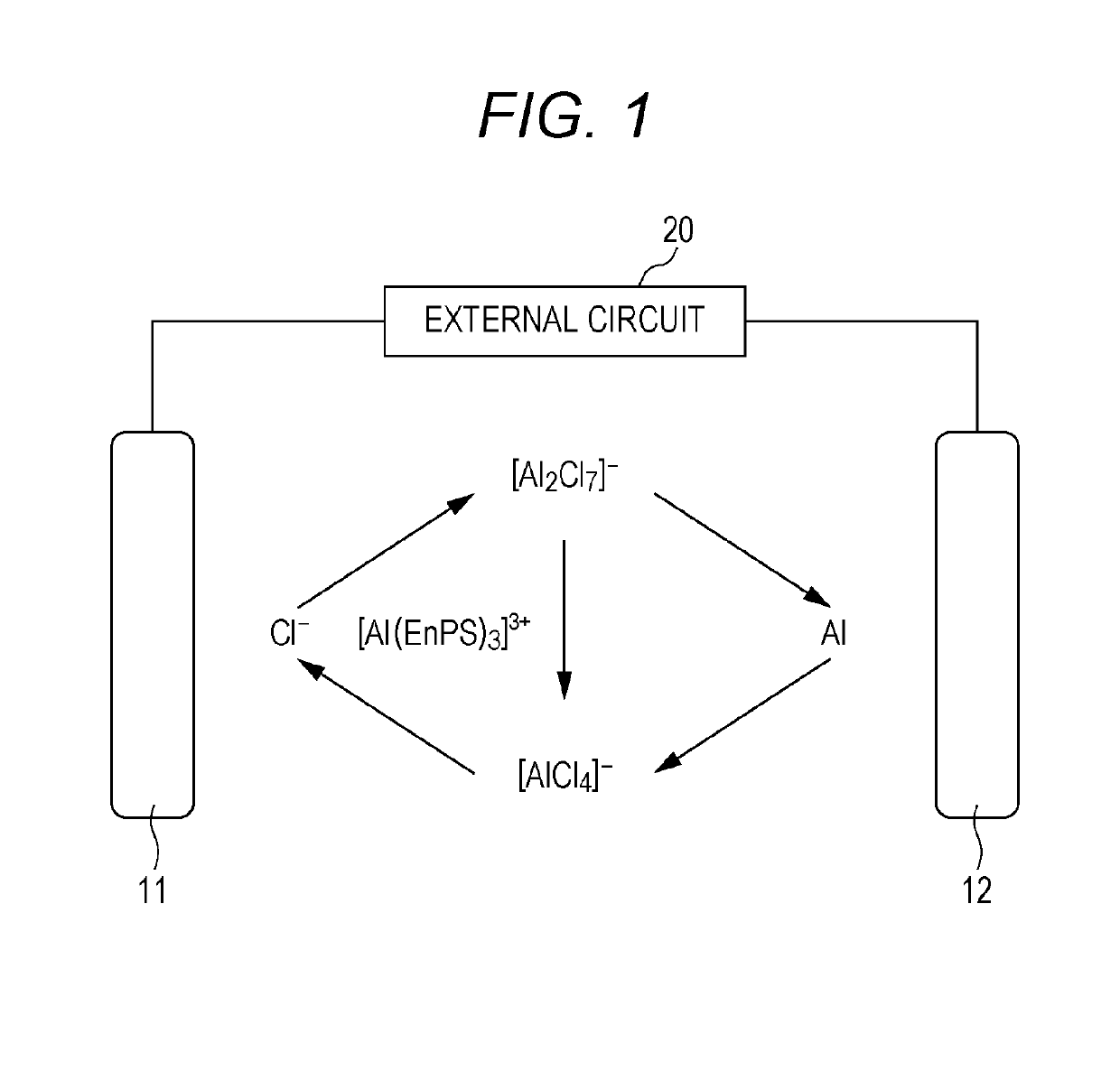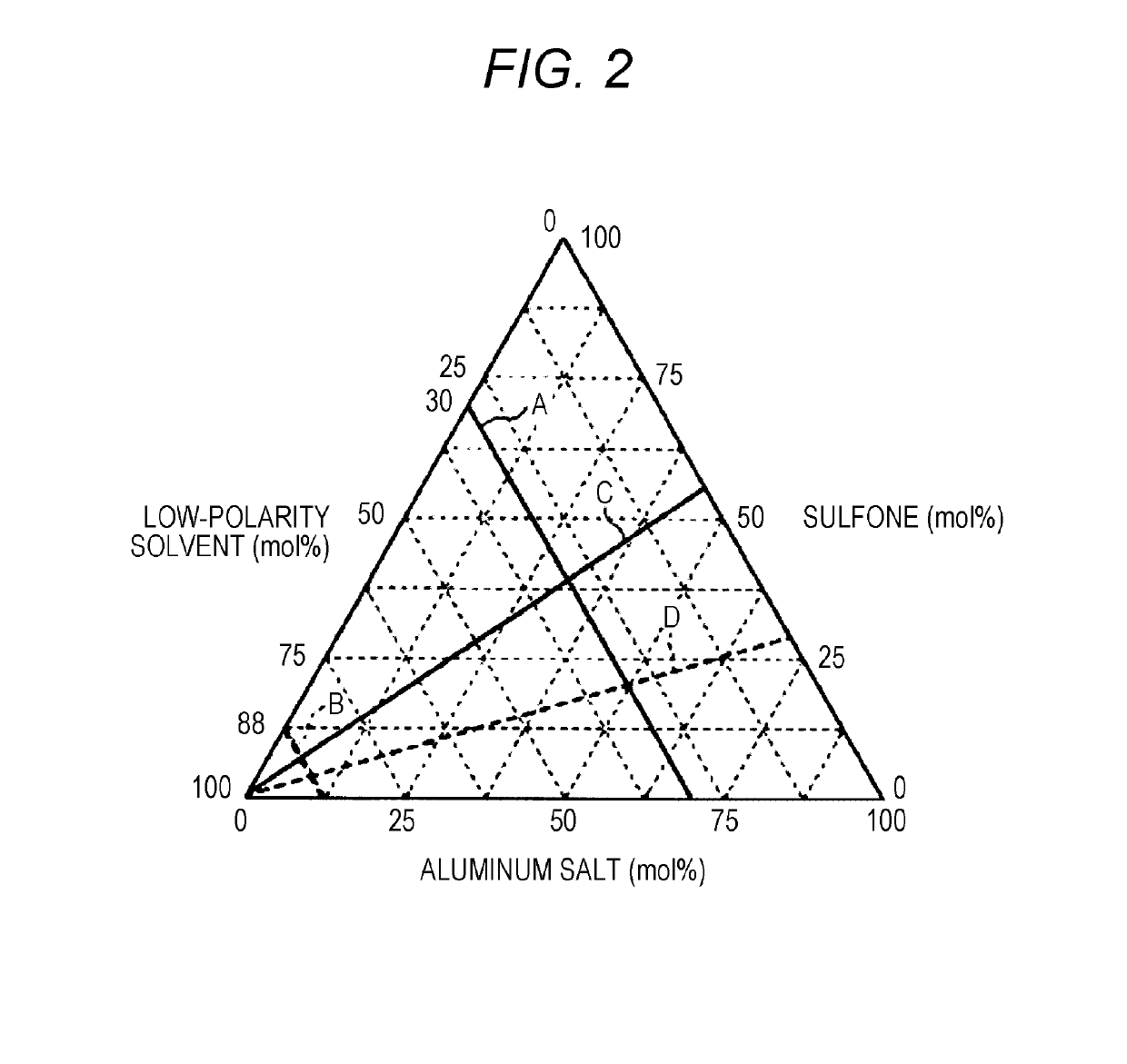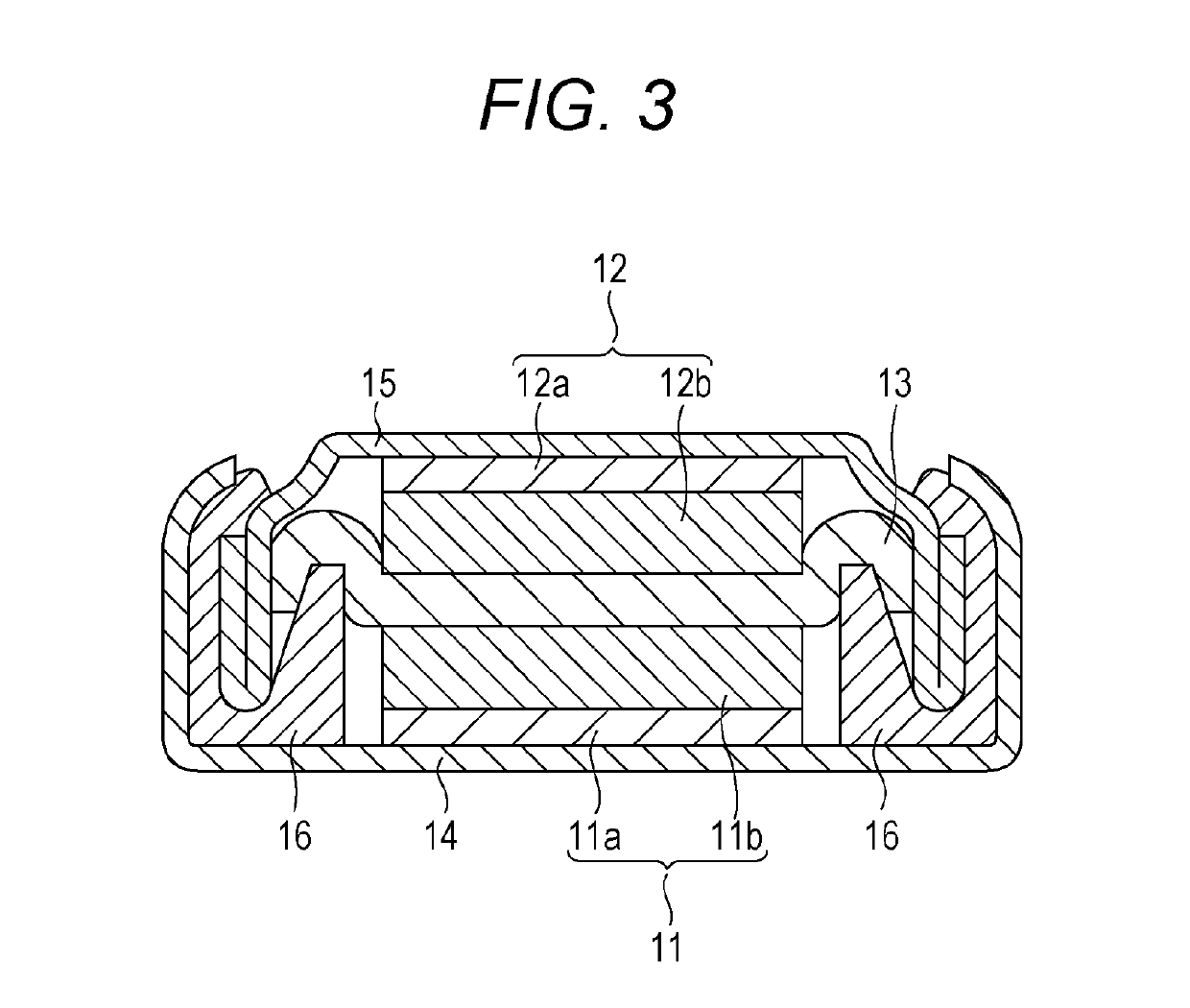Aluminum secondary battery and electronic device
a secondary battery and aluminum technology, applied in the direction of positive electrodes, active material electrodes, cell components, etc., can solve the problems of low reaction efficiency, and achieve the effect of preventing corrosion of metal materials such as sus, efficient charging and discharge of such secondary batteries, and efficient charging and discharg
- Summary
- Abstract
- Description
- Claims
- Application Information
AI Technical Summary
Benefits of technology
Problems solved by technology
Method used
Image
Examples
example 1
[0082]An aluminum secondary battery of Example 1 was manufactured in the following manner.
[0083]The process of weighing and mixing reagents was performed in a glove box (Ar / dew point −80° C. to −90° C.) Using a stirrer, 2.0 grams of low-water-content toluene (manufactured by NACALAI TESQUE, INC.) and 0.77 grams of ethyl n-propyl sulfone (EnPS, manufactured by Toyo Kasei Kogyo Co., Ltd.) were mixed and stirred until a uniform mixture was obtained. Subsequently, 1.0 gram of aluminum chloride (AlCl3, manufactured by Sigma-Aldrich Corporation) was dissolved in the mixture to form an electrolyte.
[0084]A positive electrode 11 was prepared in the following manner. Polyaniline and acetylene black (DENKA BLACK, manufactured by DENKI KAGAKU KOGYO KABUSHIKI KAISHA) were mixed using an agate mortar. PTFE was then added to the mixture and mixed again. The mixture prepared by this process was formed into a 100-μm-thick sheet using a roll press. Subsequently, a circular piece with a diameter φ of ...
example 2
[0086]An aluminum secondary battery of Example 2 was prepared as in Example 1, except that the polyaniline used was undoped oxidized polyaniline (manufactured by Sigma-Aldrich Corporation).
example 3
[0087]An aluminum secondary battery of Example 3 was prepared as in Example 1, except that the polyaniline used was p-toluenesulfonic acid-doped, oxidized polyaniline (manufactured by Alfa Aesar).
PUM
| Property | Measurement | Unit |
|---|---|---|
| dielectric constant | aaaaa | aaaaa |
| dielectric constant | aaaaa | aaaaa |
| temperature | aaaaa | aaaaa |
Abstract
Description
Claims
Application Information
 Login to View More
Login to View More - R&D
- Intellectual Property
- Life Sciences
- Materials
- Tech Scout
- Unparalleled Data Quality
- Higher Quality Content
- 60% Fewer Hallucinations
Browse by: Latest US Patents, China's latest patents, Technical Efficacy Thesaurus, Application Domain, Technology Topic, Popular Technical Reports.
© 2025 PatSnap. All rights reserved.Legal|Privacy policy|Modern Slavery Act Transparency Statement|Sitemap|About US| Contact US: help@patsnap.com



